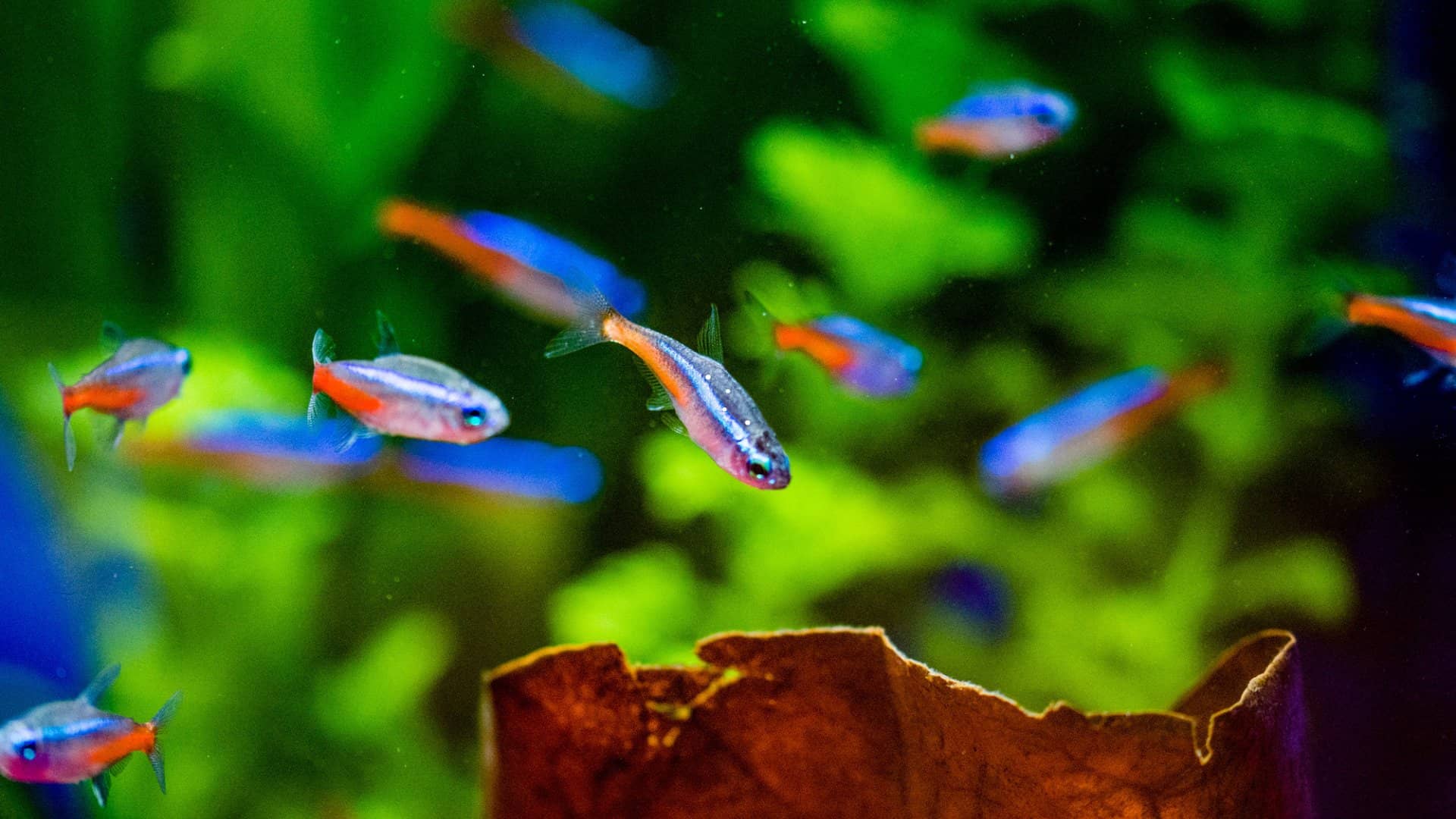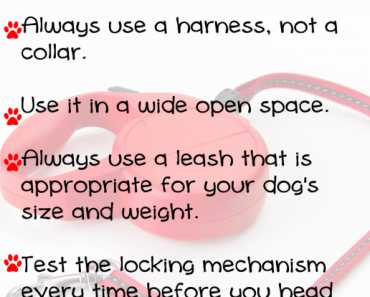Neon tetras are one of the most popular tropical freshwater aquarium fish in the hobby. These fish are beginner-friendly and relatively easy to keep, so we reckon you’ll probably have some in your community tank.
But why do your Neon tetras have white spots? Can this disease wipe out your entire population of tetras? And can you cure Neon tetra white spots?
Read this article to find out what causes Neon tetra white spots and how to save your fish.
What Causes White Spots on Neon Tetras?
There are two likely causes of white spots on your Neon tetras.
- Ich
- Neon tetra disease
Thankfully, both these diseases are curable if you spot them in time and take an appropriate course of treatment.
Ich
Ich is also commonly called White Spot disease or Ick and is a very common disease that can affect both marine and freshwater fish tanks
The Ichthyophthirius multifiliis parasite is responsible for causing White Spot disease. This aquatic protozoan parasite commonly lives in apparently healthy aquariums, where it remains undetected, causing no problems until a fish becomes stressed or injured.
Then, the parasite takes advantage of the fish’s weakened immune system and attacks the fish.
Symptoms of Ich
The Ichthyophthirius multifiliis parasite has a complex life cycle that takes around three weeks to complete.
The symptoms presented by your fish vary depending on the parasite’s life stage but typically include the following:
- Initially, infected fish begin flashing or flicking against solid surfaces in the tank in an effort to remove the irritating parasite from their skin.
- Next, the tetra develops a rash of white spots across its body, fins, and gill covers.
- As the disease progresses, infected fish typically stop eating and become very lethargic, resting on the bottom of the tank.
- If White Spot disease is not treated promptly, the infected fish’s gills can become completely blocked by the Ich parasites. The fish can’t breathe properly and can eventually suffocate.
Treating Ich
Fortunately, treating White Spot disease is pretty straightforward if you catch the condition early.
Start by raising the water temperature to 82°F for a few days.
That increase in temperature disrupts the parasite’s life cycle, giving you a chance to treat the aquarium with an Ich-specific over-the-counter medication that you’ll get from good pet and fish stores.
Follow the manufacturer’s instructions for treating your tank, and complete a partial water change once the treatment has finished.
You need to treat your entire setup rather than isolating infected fish in a quarantine tank; otherwise, the parasites will simply attack your weakened fish as soon as you return it to the main tank.
Neon Tetra Disease
Neon tetra disease affects other popular aquarium fish, as well as Neon tetras. That said, Cardinal tetras seem to be more resistant to the disease than other species.
The disease is caused by the Pleistophora hyphessobryconis parasite that effectively eats your fish from the inside out! These spore-forming parasites get into your fish via infected fish or infected food sources, such as tubifex.
Neon tetra disease affects the fish’s organs and body tissues, including the digestive tract, stomach, muscles, and intestines. The organs and musculature gradually degenerate, eventually killing the infected fish.
The disease is contagious, as healthy fish commonly pick up the infection from eating dead, diseased fish or contaminated live foods.
Symptoms
Neon tetra disease is tricky to diagnose since it presents with the same symptoms as many other parasitic and bacterial infections. However, common symptoms of Neon tetra disease can include:

Erratic Swimming Patterns
In the early stages of the disease, fish with Neon tetra disease often display odd, erratic swimming patterns. That’s pretty easy to spot in a school of Neons or other shoaling fish.
Becoming Shy
Neon tetra disease causes fish to stop swimming with their tank mates and spend most of the time hiding away among plants or inside caves.
Faded Colors
As the disease progresses, your brightly colored Neon tetras will lose their color, becoming dull or pale.
That happens because the Neon tetra disease attacks the fish’s muscle tissue. That said, Neon tetras tend to lose their color when stressed, so your fish might not necessarily have Neon tetra disease.
White Cysts or Spots
When the disease reaches its later stages, your Neon tetras might develop white spots or cysts.
That happens when the parasite attacks the fish’s intestines, advances through the muscle tissue, and causes lumpy, white cysts.
Curved Spine
Eventually, the fish’s tissues and muscles waste away, causing the formerly straight blue line on the Neon tetra to become distorted, forming an “S” shape. In addition, the fish’s tail will start to turn downward.
Secondary Bacterial Infections
At the end stages of the disease, your fish will often develop other secondary infections, such as fin rot or bloat.
False Neon Tetra Disease
Columnaris is a common bacterial condition that’s sometimes confused with Neon tetra disease.
Columnaris can also cause white patches to appear on the fish’s body, often leading to a misdiagnosis of fungus or White Spot disease.
Can I Treat Neon Tetra Disease?
Unfortunately, there are no current treatments that are effective against Neon tetra disease.
Some antibacterial medications might provide some relief by preventing additional infections, but they won’t cure your fish of this fatal condition.
If your fish recover following treatment, it’s likely they were suffering from False Neon Tetra disease.
Medicated Baths
Bathing your fish in a methylene blue bath for ten days can help to kill off parasite infections and provide other benefits, including the following:
- preventing open sores from becoming infected
- promoting faster healing through osmoregulation
- preventing bacterial growth
- promoting absorption of oxygen by the tissues
Be careful not to overdose with methylene blue, as the chemical can kill off the beneficial bacteria in your filtration system and on tank surfaces.
How To Prevent Neon Tetra White Spots
Both potential causes of white spots in Neon tetras can be prevented by managing your aquarium correctly and taking a few simple precautions.
Quarantine New Fish
Whenever you buy new fish, it’s essential that you quarantine them before introducing your new purchases to your main display tank.
Stress compromises the fish’s immune system, weakening the creature and making it vulnerable to attack by parasites and other diseases.
Transporting fish and placing them in a new environment is always stressful, so allowing your new purchases to settle down in a quarantine tank can be helpful in reducing stress.
Observation
When you buy fish from a pet store, you have no idea how long the fish have been there, where they came from, or what water conditions they were kept in.
I’ve lost count of the number of times I bought some new fish home, only to have them develop Ich within a few days of their arrival.
Placing your new fish in a quarantine tank enables you to observe them for a fortnight or so to ensure they’re healthy and disease-free before moving your new pets into your main tank.
Avoid Feeding Your Fish With Live Food
Unless you have a home brine shrimp hatchery or a very reliable supplier, we recommend that you don’t give your Neon tetras live food.
As previously mentioned, tubifex and other living food sources are common sources of parasites and bacteria that can infect your fish.
Instead, we advise you to give your fish the meaty protein they need from frozen foods. Frozen food is disease-free, easy to store, inexpensive to buy, and readily available. Unlike live foods, frozen food doesn’t die and comes with a good use-by date if you store it correctly.
Remove Infected Fish
If your fish have Neon tetra disease, you need to remove infected fish from your tank immediately for treatment in a hospital tank.
If the fish die and are eaten by their tank mates, the disease will spread, potentially wiping out your entire collection.
Keep the Tank Clean
Parasites and bacteria thrive in dirty conditions, so you must keep your entire tank clean and well-maintained.
Poor water quality can stress your fish, so be strict with yourself, and don’t skimp or miss out on regular water changes and essential filter system maintenance.
Neon tetras can be sensitive to fluctuations in water parameters, so you must test the water every week with a high-quality aquarium water testing kit.
Ensure that the nitrate levels are below 20 ppm and that ammonia and nitrite levels are zero. Ideally, the pH level should be between 6.0 and 8.0.
These fish inhabit soft, acidic water in the wild, so the water hardness should be around 10 dGH.
FAQs
Here, we answer some of the most frequently asked questions about white spots in Neon tetras.
Q: What Are the Symptoms of Ich in Tetra Fish?
A: Neon tetras with Ich start by flicking themselves against solid objects in the tank. After a few days, the fish develop a rash of white spots across their body, head, and fins.
Other symptoms include lethargy, loss of appetite, and breathing difficulties.
Q: Can a Tetra Fish Survive Ich?
A: Yes, provided you identify and treat the condition promptly.
Q: Can White Spot Go Away on Its Own?
A: Sometimes, White Spot disappears on its own with no treatment. That generally happens if the fish are healthy and given optimum living conditions and a good diet.
Q: How Long Does White Spot Take to Clear?
A: The White Spot parasite’s lifecycle takes around three weeks to complete. However, once treated correctly, the condition usually clears up within a week.
Q: Does UV Light Kill Ich?
A: UV sterilizers will kill most protozoan parasites, including Ich, during the free-swimming lifecycle stage. However, once the parasites are attached to the fish, UV light won’t kill them.
Q: Can I Use Aquarium Salt to Cure White Spot Disease?
A: Aquarium salt can be used to treat Ich, although over-the-counter medication is more reliable for getting rid of the parasites.
Q: Does Feeding Garlic to My Fish Kill Ich?
A: Garlic contains a chemical called Allicin, which can kill some parasites, including freshwater Ich.
Q: Can You Scrape White Spot off Fish Skin?
A: We don’t recommend trying to scrape Ich off your Neon tetras. Not only would that severely stress your fish, but it would be extremely difficult to achieve on such small fish.
Q: Can Fish Catch White Spot Twice?
A: Unfortunately, unless your fish build up an immunity to the Ich parasite or you manage to completely irradicate the disease from your aquarium, your Neon tetras and other fish will be repeatedly reinfected.
Final Thoughts
Did you enjoy our guide to white spots in Neon tetras? If the information was helpful and you cured your fish, please tell us in the comments box below!
There are two diseases that can cause white spots on Neon tetra fish; Ich and Neon Tetra disease.
Ich or White Spot disease is a common problem for aquarists and often affects fish that are stressed or already weakened by disease. Ich is relatively easy to treat with over-the-counter medication and careful management of tank cleanliness.
Unfortunately, Neon Tetra disease is incurable, although you can take steps to keep your fish comfortable by treating them with broad-spectrum antiparasitic medication and methylene blue.
Please take a moment to share this article before you go, and happy fishkeeping!
The post Neon Tetra and White Spots – Common Causes and Treatments appeared first on Aquariadise.


























